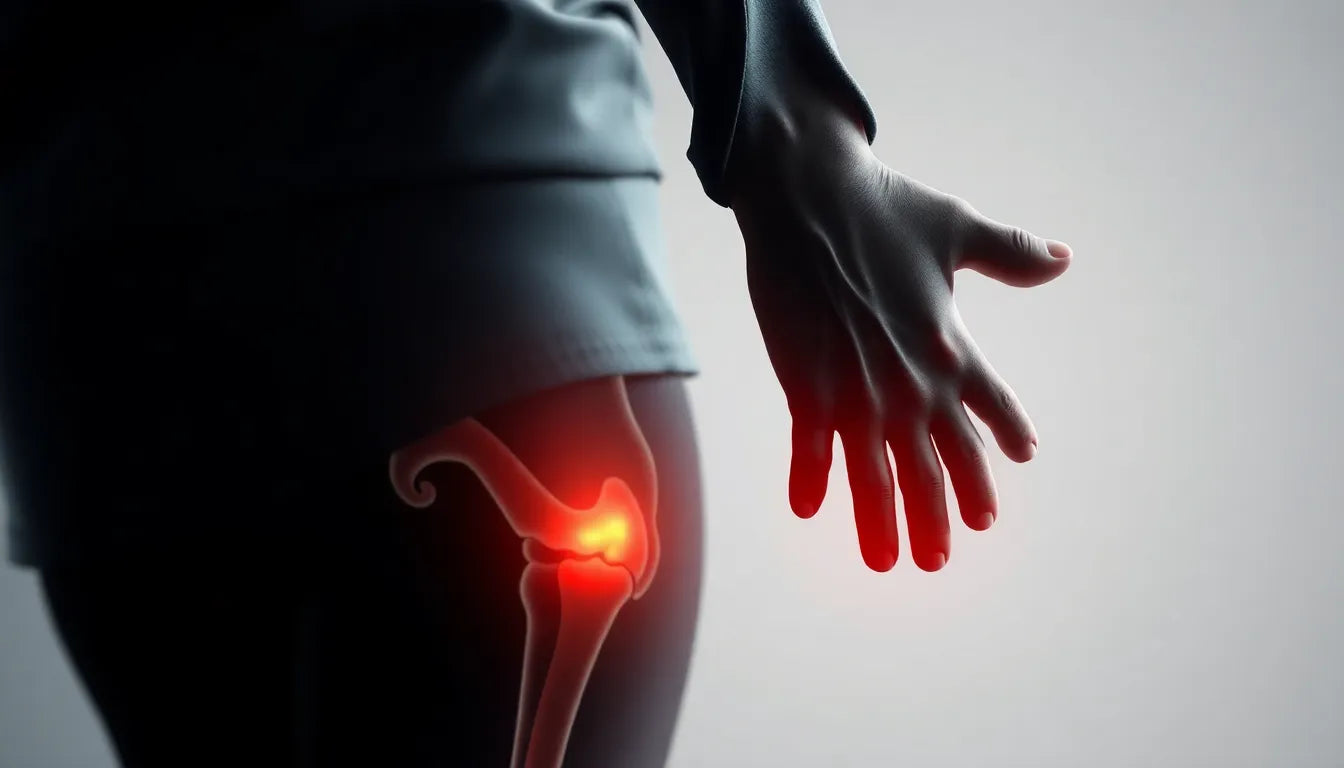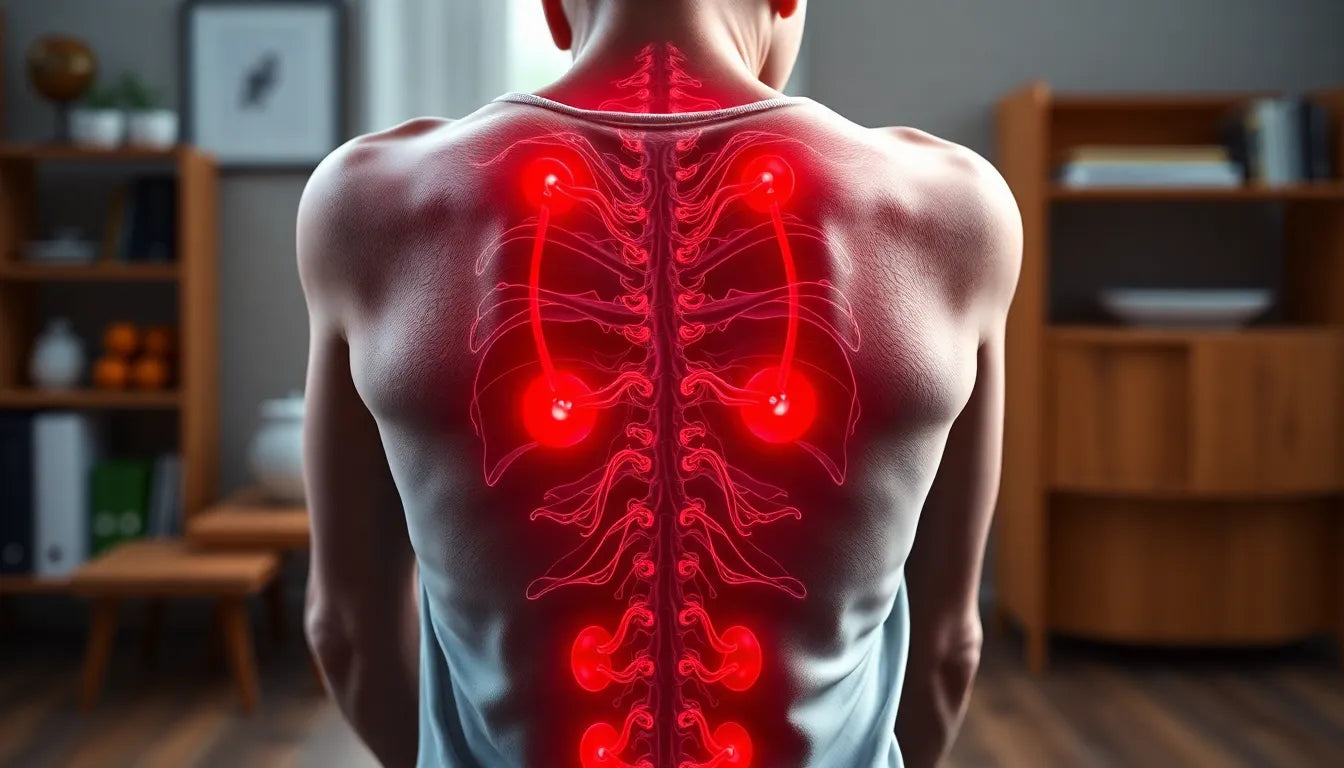Lower back pain, or "ondt nederst i lænden," is a common ailment that affects many people at some point in their lives. This type of pain can range from a mild discomfort to severe, debilitating pain that interferes with daily activities. Understanding the causes and symptoms of lower back pain is crucial for effective management and relief.
Symptoms of lower back pain
The symptoms of lower back pain can vary widely but often include stiffness and muscle tension in the lower back area. Many people experience pain that radiates to the buttocks or legs, which can fluctuate in intensity throughout the day. This variability in pain can make it challenging to pinpoint the exact cause without professional guidance. Early identification of these symptoms is essential to prevent the condition from worsening and to ensure timely intervention.
Why it’s important to address lower back pain
Ignoring lower back pain can lead to more severe issues, such as chronic pain and reduced mobility. Chronic pain can significantly impact one's quality of life, affecting both physical and mental health. Furthermore, untreated lower back pain can result in prolonged periods of inactivity, which may lead to muscle weakening and further pain. This blog aims to shed light on the causes and symptoms of lower back pain and explore non-surgical treatment options that can help alleviate discomfort and improve daily functioning.
By understanding the underlying causes and recognizing the symptoms early, individuals can take proactive steps to manage their pain effectively. This includes engaging in exercises, adopting ergonomic practices, and seeking professional advice when necessary. Addressing lower back pain promptly can prevent the development of more severe complications and enhance overall well-being. Stay tuned as we delve deeper into the common causes and explore practical, non-invasive solutions to help you find relief and regain control over your life.
frequent causes of lower back pain
Lower back pain, or "ondt nederst i lænden," can stem from a variety of causes, each affecting the body in different ways. Understanding these causes is essential for effective management and prevention of further issues. Here, we explore some of the most frequent causes of lower back pain.
non-specific lower back pain (lumbago)
One of the most common causes of lower back pain is non-specific lower back pain, often referred to as lumbago. This condition is typically triggered by activities such as lifting heavy objects, twisting motions, prolonged inactivity, or overuse of the back muscles. While the exact cause can be difficult to pinpoint, these activities can lead to muscle strain and tension, resulting in discomfort and pain in the lower back region.
disc herniation and nerve root compression
Disc herniation occurs when the soft center of a spinal disc pushes through a crack in the tougher exterior casing. This can lead to nerve root compression, causing symptoms such as leg pain, tingling, numbness, and muscle weakness. These symptoms often worsen with actions like coughing or sneezing. Disc herniation is a significant concern as it can severely affect mobility and quality of life, necessitating timely medical intervention.
facet joint syndrome and mechanical locking
Facet joint syndrome and mechanical locking are less frequently discussed but are relevant causes of lower back pain. These conditions involve the small stabilizing joints located at the back of the spine. Pain is often experienced during activities such as breathing, coughing, or sneezing, due to the mechanical locking of these joints. Recognizing these symptoms can help in differentiating facet joint syndrome from other types of lower back pain.
spinal stenosis
Spinal stenosis is a condition that predominantly affects older adults, characterized by the narrowing of the spinal canal. This narrowing can put pressure on the nerves, leading to symptoms such as pain and discomfort in the legs, especially when walking. Understanding spinal stenosis is crucial as it requires specific management strategies to alleviate symptoms and improve mobility.
symptoms and red flags
Identifying the symptoms of lower back pain and recognizing red flags is vital for effective treatment and prevention of more serious conditions.
localized lower back pain
Localized lower back pain often presents as stiffness and pain that may radiate to the buttocks or legs. The intensity of this pain can vary, making it challenging to manage without proper guidance. Being aware of these symptoms allows individuals to seek timely intervention and prevent the progression of the condition.
red flags indicating need for medical attention
While many cases of lower back pain can be managed with self-care, certain symptoms require immediate medical attention. These red flags include severe leg symptoms, neurological deficits, bladder or bowel dysfunction, fever, and unexplained weight loss. Recognizing these signs is critical in ensuring prompt medical evaluation and treatment.
non-surgical treatment and self-care
Managing lower back pain effectively often involves a combination of self-care strategies and professional guidance. Here are some non-surgical approaches to consider:
active management and gradual movement
Contrary to popular belief, staying active and avoiding prolonged bed rest is crucial in managing lower back pain. Engaging in gentle movements and exercises can help reduce stiffness and improve flexibility, leading to better pain management and recovery.
physical therapy for persistent issues
For individuals experiencing persistent lower back pain, physical therapy can be a valuable resource. A physical therapist can provide education and guidance on exercises tailored to individual needs, promoting recovery and preventing future episodes. Many cases of lower back pain resolve spontaneously with appropriate physical therapy and self-care.
ergonomics and pain relief strategies
Incorporating ergonomic adjustments and pain relief strategies into daily routines can significantly alleviate lower back pain. This includes varying positions throughout the day, making ergonomic adjustments to workstations, and utilizing pain-relief measures such as heat or cold therapy. By adopting these strategies, individuals can enhance their comfort and reduce the impact of lower back pain on their daily lives.

Lumbar support belt
Provides adjustable support and relief for lower back pain; suitable for sciatica, herniated discs, and daily use.
Detailed self-care and treatment plans for lower back pain
Addressing lower back pain effectively requires a structured approach that combines immediate relief strategies and long-term management plans. Here's a breakdown of how to manage pain in the short and medium term:
24–72 hour plan
In the initial phase, it's crucial to engage in light activities to prevent stiffness. Applying heat or cold packs can provide immediate relief, while over-the-counter pain medications may be used as needed. Position variation is key—avoid staying in one position for too long, whether sitting or standing, to maintain flexibility and comfort.
7–14 day plan
As you move into the second week, incorporate a structured exercise program. Focus on exercises that improve core stability and flexibility, such as McKenzie extensions and hip flexor stretches. These exercises should be performed at a comfortable intensity, gradually increasing as your comfort level improves. Expect to see gradual improvements in pain and mobility during this period.
work ergonomics and everyday strategies
Integrating ergonomic practices into your daily routine can significantly reduce lower back pain. Take micro-breaks during work to stretch and adjust your posture. Employ proper lifting techniques and consider using posture support clothing to maintain spinal alignment. These strategies can help prevent further strain and promote long-term back health.

Men's Posture Shirt™ - Black
Patented shirt activates muscles, improves posture, and relieves back and neck pain. For work, exercise, and daily use.
When to seek professional help for lower back pain
While many cases of lower back pain can be managed with self-care, there are instances when professional intervention is necessary. Consulting a physiotherapist is recommended if pain persists beyond a few weeks or if you experience any red flags such as severe leg symptoms or neurological deficits. Physiotherapists can provide tailored exercise programs and manual therapy to aid recovery. For conditions like herniated discs, improvement is often seen within 3–4 months without the need for surgery.
Frequently asked questions
What provides quick relief for lower back pain?
Quick relief can often be achieved through the application of heat packs to the affected area, which helps relax tense muscles. Gentle stretching exercises can also alleviate stiffness and improve mobility.
How long does lower back pain last, and when should I see a doctor?
Lower back pain can vary in duration, typically resolving within a few weeks with self-care. However, if pain persists or is accompanied by symptoms like severe leg pain, numbness, or bladder issues, consult a healthcare professional promptly.
Is it dangerous if the pain radiates down the leg?
Pain radiating down the leg can indicate nerve involvement, such as sciatica. While not always dangerous, it requires attention, especially if accompanied by weakness or numbness, to prevent further complications.
What exercises are best for lower back pain?
Effective exercises for lower back pain include McKenzie extensions, hip flexor stretches, and core strengthening routines. These exercises help enhance flexibility and support spinal stability.
Can I continue to exercise or work with lower back pain?
Yes, maintaining a moderate level of activity is beneficial. Modify exercises to avoid exacerbating pain and incorporate ergonomic adjustments at work to support your back. Always listen to your body and adjust activities as needed.
Kilder
- Apopro. (n.d.). "Ondt i lænden." Apopro.
- Aarhus Osteopati. (n.d.). "Lændesmerter." Aarhus Osteopati.
- Rygklinik. (n.d.). "Lænd og bækken." Rygklinik.
- Medicin.dk. (n.d.). "Lændesmerter." Medicin.dk.
- Din Flexible Sundhed. (n.d.). "Akutte lændesmerter." Din Flexible Sundhed.
- Gigtforeningen. (n.d.). "Symptomer ved diskusprolaps." Gigtforeningen.
- Rigshospitalet. (n.d.). "Bensmerter på grund af diskusprolaps i lænden." Rigshospitalet.


















